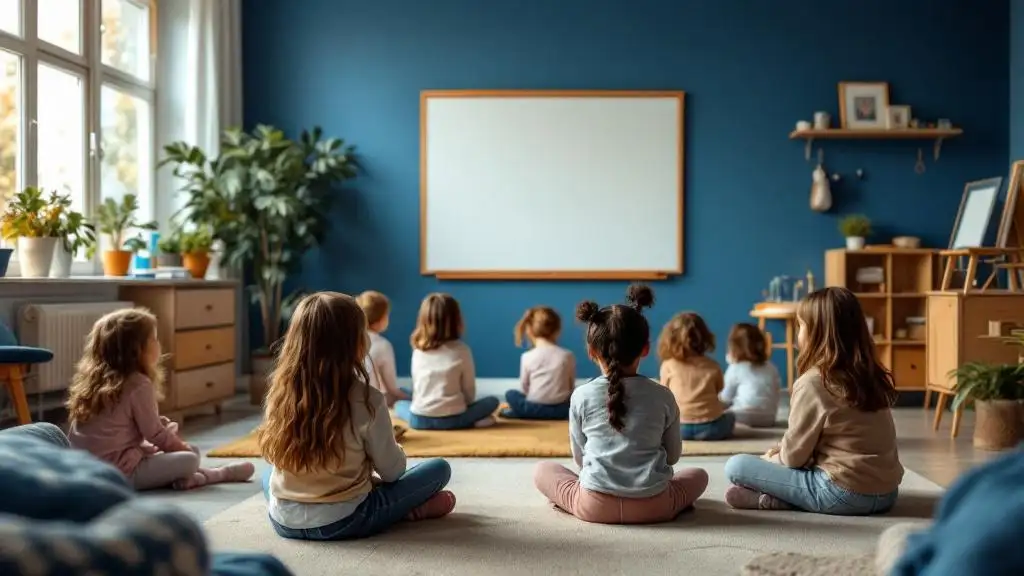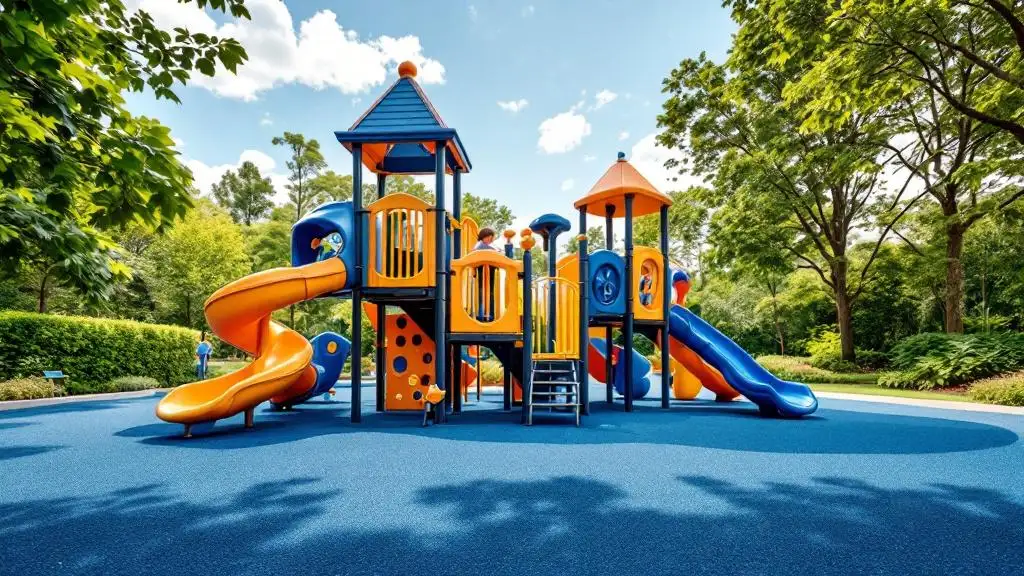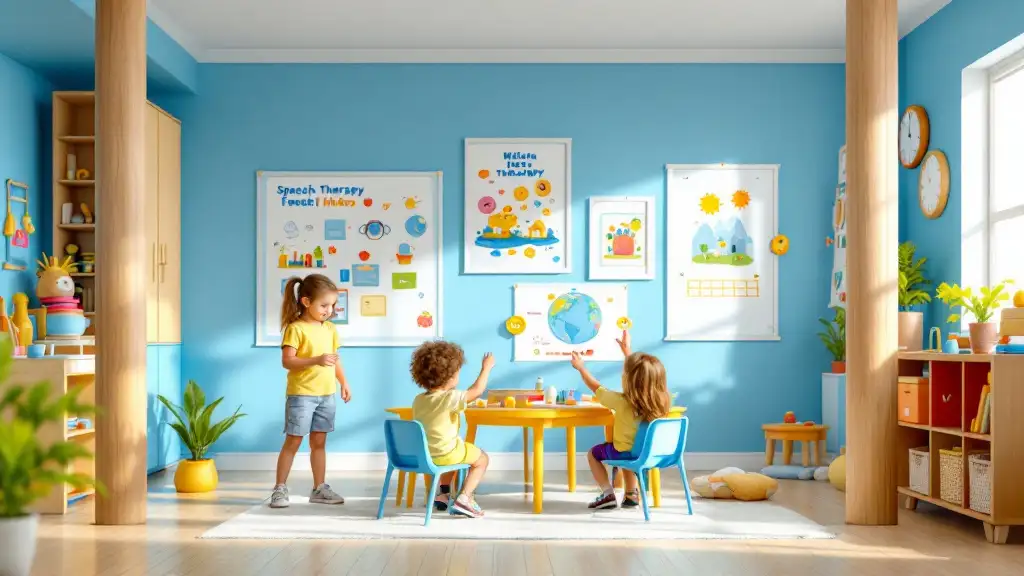
Understanding the Importance of Pragmatic Language in Child Development
Pragmatic language, which encompasses the social use of language, is vital for effective communication in various social contexts. It involves understanding and applying rules for conversation, interpreting nonverbal cues, and engaging appropriately with peers and adults. Speech therapy plays a crucial role in supporting children who experience difficulties in these areas, facilitating their ability to participate confidently in peer group activities and social interactions. This article explores the role of speech therapy, effective strategies, developmental milestones, and how structured peer activities can significantly enhance pragmatic language skills.
The Role of Speech Therapy in Developing Pragmatic Language Skills
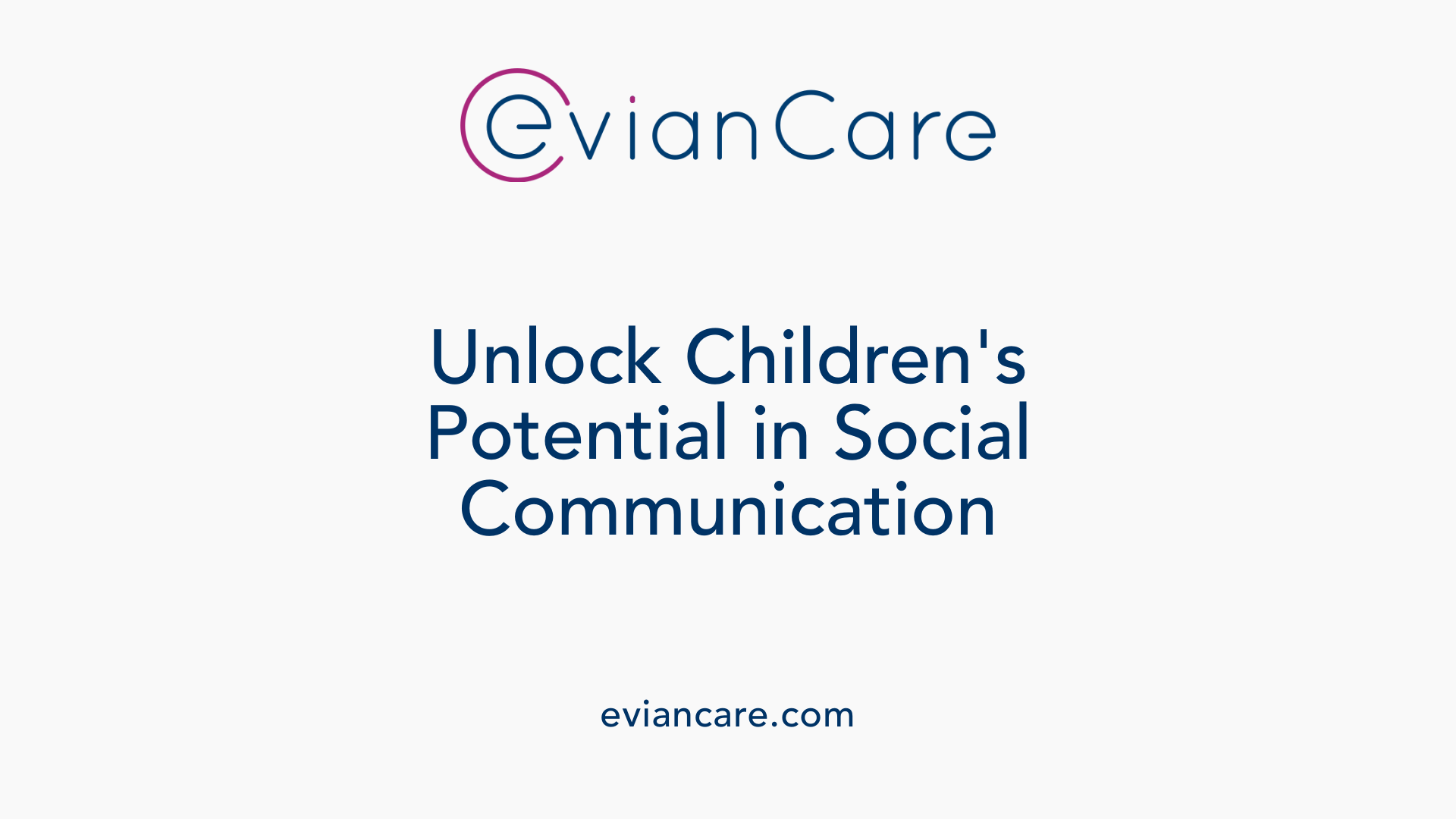
What is the role of speech therapy in enhancing pragmatic language skills?
Speech therapy is crucial for helping children improve their social communication abilities, known as pragmatic language skills. These skills include understanding and using language effectively in various social contexts, which are essential for meaningful interactions.
The process begins with thorough assessment and identification of each child's specific social communication challenges. Speech-language pathologists evaluate areas like initiating conversations, maintaining eye contact, understanding emotions, and interpreting non-verbal cues such as gestures and tone of voice.
Based on these assessments, personalized treatment plans are created to target the child's unique needs. These plans often include activities designed to improve specific skills, such as turn-taking in conversations, respecting personal space, and following social rules.
Integral to therapy are engaging activities like role-playing, storytelling, and social skills training. Role-playing allows children to practice real-life social scenarios in a safe and structured environment, helping them recognize appropriate responses. Storytelling activities foster verbal expression and understanding of sequence, making it easier to participate in conversations.
Furthermore, children learn to identify and respond appropriately to social cues, jokes, and sarcasm, which are often challenging for those with social language deficits. Recognizing such cues is vital for understanding social norms and engaging successfully with peers and adults.
Speech therapy also emphasizes supporting children to apply these skills in everyday situations. For example, practicing greetings and conversational turn-taking at home or in community settings reinforces learning from therapy sessions.
The overall goal of speech therapy in this context is to foster functional social interactions that children can carry over into their daily lives. This includes participating in play activities, school conversations, and peer interactions confidently and appropriately.
Research and programs like the E-PLAYS computer-based intervention exemplify innovative approaches to developing pragmatic language skills. Such tools involve interactive games that promote collaboration and communication, with encouraging results published from clinical trials.
In summary, speech therapy plays a vital role by providing tailored interventions aimed at improving social language skills. Therapists work with children to help them navigate social situations successfully, ultimately supporting their social integration and emotional well-being.
How Peer Group Activities Support Pragmatic Language Development
How can peer group activities support pragmatic language development?
Engaging children in peer group activities provides them with real-life social settings where they can practice essential communication skills. These activities serve as natural environments for children to learn how to initiate conversations, share ideas, and respond appropriately to their peers. Such interactions are fundamental in developing pragmatic language abilities, which encompass understanding social rules and cues.
During these activities, children can develop skills like turn-taking, understanding non-verbal cues such as facial expressions and gestures, and maintaining a relevant topic throughout a conversation. For example, children might participate in collaborative storytelling, role-playing scenarios, or group games that require sharing, listening, and responding.
Support strategies play a vital role in reinforcing these skills. Verbal prompts and visual cues, like showing how to make eye contact or use greetings, guide children in practicing appropriate social behaviors. Modelings by peers or adults during these interactions provide concrete examples of effective communication.
Programs such as Kidz Therapy’s Pragmatic Language Groups are designed to target these social skills explicitly. These structured groups focus on helping children establish eye contact, respect personal space, sustain conversations, and follow social language rules. The activities within these groups typically include practicing greetings, understanding perspectives, and participating in cooperative play.
Research indicates that structured social interactions significantly boost pragmatic language skills among children with social communication challenges. When combined with targeted therapy and peer support, these activities create meaningful opportunities for children to develop confidence and competence in social settings.
Activities promoting turn-taking, eye contact, and topic maintenance
| Activity Type | Description | Benefits |
|---|---|---|
| Role-Playing | Children act out scenarios like greeting friends or asking for help. | Improves understanding of social cues and appropriate responses. |
| Turn-Taking Games | Engaging in board games or group activities that require common rules. | Reinforces patience, listening skills, and Respect for others' speech. |
| Group Story Creation | Collaborative story-building with peers, each adding parts. | Enhances topic maintenance and cooperative language use. |
| Non-verbal Communication Exercises | Activities like miming or facial expression games. | Develops awareness of body language cues. |
| Guided Discussions | Facilitated conversations about daily experiences or interests. | Practices initiating and sustaining conversations. |
Modeling and verbal prompts during interactions
The role of adults and peers as models is crucial in teaching pragmatic language. When children observe appropriate social behaviors, they learn by imitation. Verbal prompts, such as reminders to make eye contact or wait for a turn, help children internalize social rules. Visual aids like cue cards or pictures can serve as effective prompts.
Structured programs like Pragmatic Language Groups
Structured group programs provide systematic opportunities for practicing social communication skills. Kidz Therapy’s Pragmatic Language Groups, for example, focus on areas like initiating conversations, understanding emotions, respecting personal space, and modulating vocal intensity. These groups facilitate targeted practice within a safe, supportive environment.
Participation in such structured settings allows children to receive direct feedback, refine their social language skills, and build confidence. They are especially beneficial for children with social language deficits, who often struggle with play and peer interactions. The combination of real-world practice and professional support ensures that children develop effective and appropriate communication habits.
Effective Strategies and Activities for Improving Social Communication
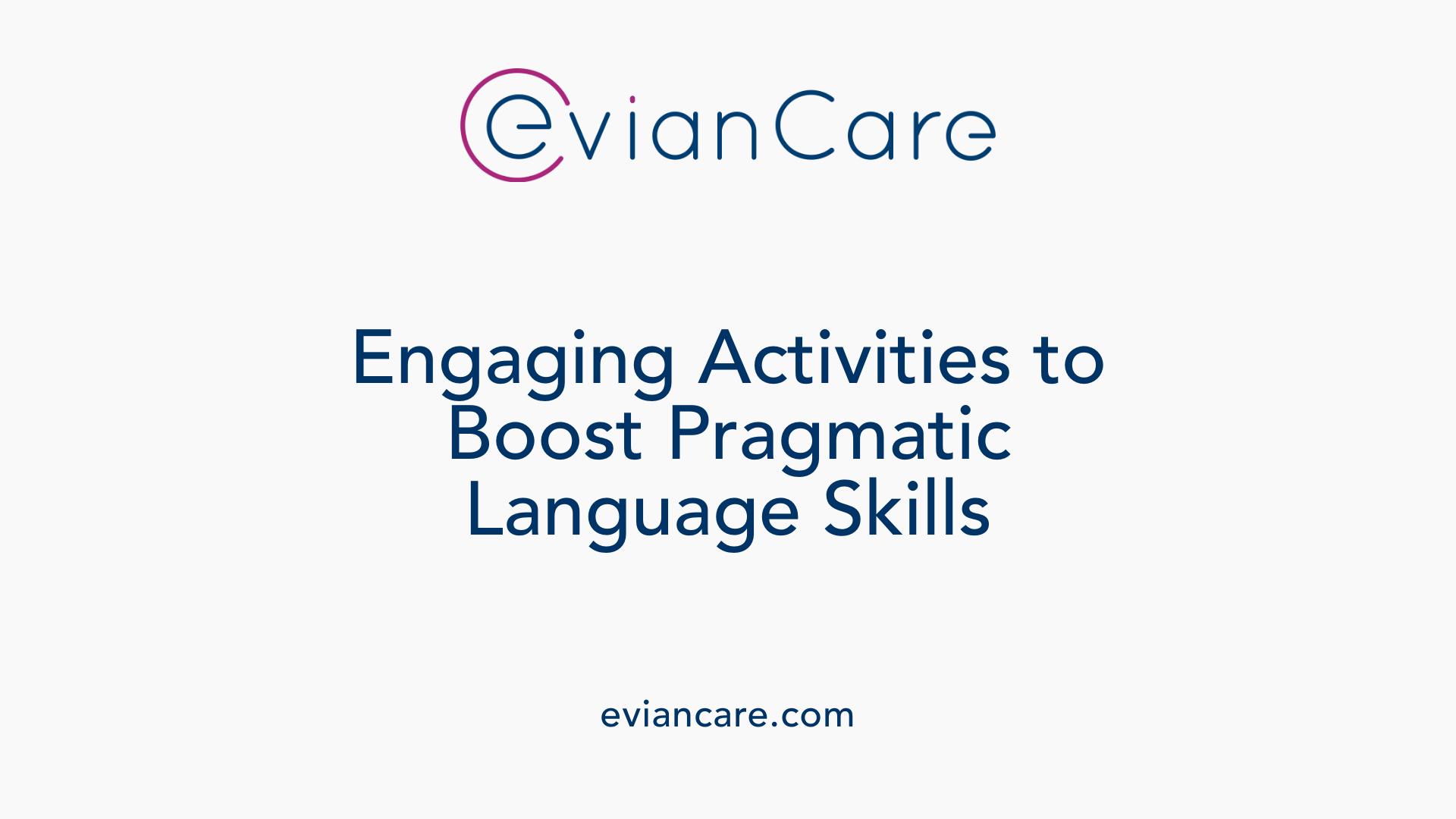
What are effective strategies and activities to improve social communication skills in children?
Enhancing social communication skills in children involves a variety of engaging and structured activities designed to teach and reinforce social norms, cues, and interaction skills.
One of the most effective methods includes role-playing, social stories, and modeling behaviors. These approaches help children understand complex social cues and norms by acting out real-life situations or observing positive examples. For instance, modeling appropriate greetings, turn-taking, and eye contact provides clear examples for children to imitate.
Interactive games are also essential. Activities such as emotion charades allow children to recognize and express feelings, fostering emotional awareness. Pretend play offers a platform for practicing social roles, cooperation, and problem-solving in simulated environments. Turn-taking games like rolling the ball or simple board games help children develop patience and fairness, key components of social interaction.
Visual supports and video modeling are valuable tools to reinforce learning. Visual schedules, cue cards, and videos demonstrate appropriate social behaviors and routines, especially beneficial for children with diverse needs, including autism spectrum disorder. Programs like the ASAP (Autism Spectrum Assistance Program) utilize structured interventions that incorporate visual and behavioral strategies to target specific skills.
Structured activities focused on turn-taking, conflict resolution, and problem-solving are also integral. Group activities that involve collaborative tasks—such as building simple projects or participating in group discussions—encourage communication, perspective-taking, and cooperative behavior.
A combined approach—integrating play-based strategies, visual supports, and structured social skills training—creates a comprehensive framework. Customizing these activities to the child's developmental stage ensures more effective learning and generalization of skills.
| Strategy/Activity | Purpose | Additional Notes |
|---|---|---|
| Role-playing, social stories, and modeling | Teach social cues and appropriate responses | Useful for understanding social norms |
| Emotion charades, pretend play, turn-taking games | Foster emotional recognition, cooperation, patience | Play-based methods increase engagement |
| Visual supports, video modeling | Reinforce routines and social behaviors | Especially effective for children with diverse needs |
| Activities on turn-taking, problem-solving, conflict resolution | Develop dispute management and cooperative skills | Prepares children for real-life social challenges |
Combining these strategies within tailored programs and interventions ensures children develop robust social communication skills, essential for successful interactions in daily life.
Early Signs of Pragmatic Language Difficulties and Their Identification
How can one identify signs of pragmatic language difficulties in children?
Pragmatic language skills are crucial for effective social communication. When children face difficulties in this area, certain signs become noticeable early on. One of the most observable indicators is trouble maintaining conversations. Children may find it hard to keep a conversation going or might suddenly change topics without clear reason.
Additionally, challenges with social cues are common. Children might not pick up on gestures, facial expressions, or tone of voice that are essential for understanding the emotional context of interactions. This can lead to misunderstandings or inappropriate responses.
Another sign is the inability to comprehend or use jokes, sarcasm, or indirect language. Such children often interpret language literally, missing the implied meaning behind many social expressions.
Behaviorally, children with pragmatic language difficulties may interrupt peers or adults, speak off-topic, and display limited awareness of conversation rules like turn-taking. They might speak in a way that does not match the social setting or the listening partner’s needs.
Children showing these signs often struggle with forming and maintaining friendships. They may have fewer peer interactions or display difficulties in understanding nonverbal communication like gestures and facial cues. Furthermore, their speech might be delayed or atypical, with less use of language for social purposes such as greeting, requesting, or commenting.
In terms of nonverbal communication, these children might have poor eye contact, limited gestures, or inappropriate use of facial expressions. These behaviors, combined with delays in speech development and challenges in expressing thoughts and feelings, can collectively point to potential pragmatic language difficulties.
Early identification involves observing these behaviors consistently across different settings, such as home and school, and consulting professionals. Speech-language pathologists can conduct assessments to evaluate pragmatic language skills in detail, using tools like the Test of Pragmatic Skills (TPS). Early recognition allows for timely intervention, which can significantly improve social functioning and communication outcomes.
Overall, being attentive to these signs and seeking professional assessment can facilitate early support for children with pragmatic language difficulties, promoting better social integration and communication skills.
Speech Therapy Services Supporting Pragmatic Language Development
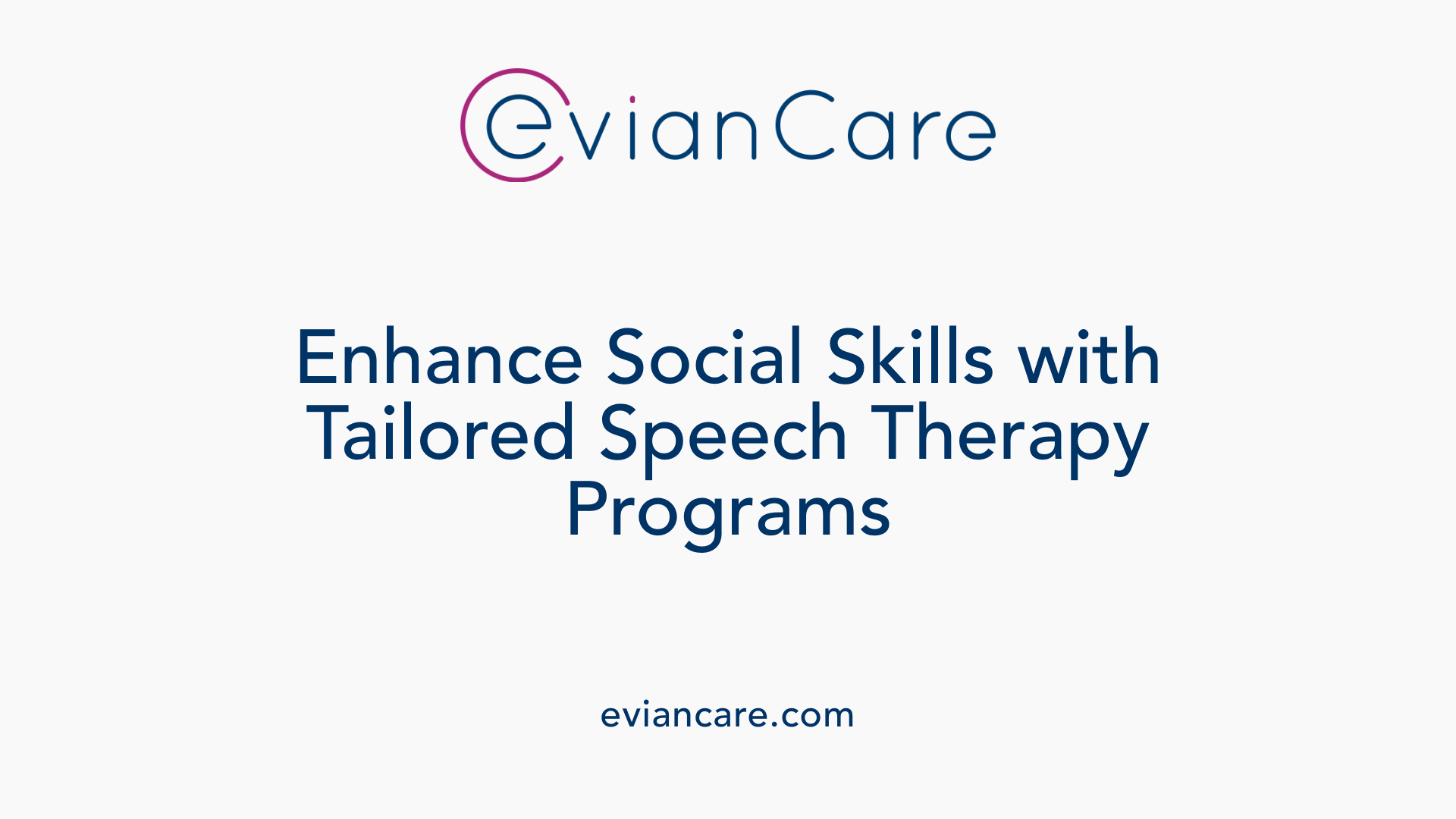
What types of speech therapy services support pragmatic language development?
Supporting pragmatic language development involves specialized therapy methods tailored to improve social and communication skills. Speech-language pathologists provide both group and individual therapy sessions focusing on real-world social interactions. These programs are designed to teach children how to initiate conversations, maintain eye contact, and respect personal space, which are crucial for effective social communication.
One example is the Pragmatic Language Groups offered by centers such as Kidz Therapy Services. These groups target specific areas like conversation initiation, turn-taking, and appropriate vocal tone. The therapy sessions often involve structured activities that simulate real-life social situations, giving children opportunities to practice these skills with peers.
Alongside these groups, individual therapy sessions are common, particularly for children with more pronounced challenges. Such sessions are personalized to address the child's unique needs, focusing on functions of language like requesting information, making comments, or understanding conversation rules.
Institutions like Northeastern University’s Speech-Language Center also contribute through research-based interventions. These services combine social skills training with explicit teaching strategies, helping children develop and apply their pragmatic language abilities effectively.
Importantly, qualified speech-language pathologists (SLPs) are key to delivering these services. These professionals are certified by organizations such as the American Speech-Language-Hearing Association (ASHA). Their expertise ensures that therapy programs are evidence-based and tailored to each child's developmental stage and social needs.
Parent involvement plays a vital role as well. Many therapy models incorporate parent training, empowering caregivers to support their child's social language development at home through activities like pretend play, role-playing scenarios, and practicing greetings or turn-taking games.
Below is a summary table of common services and their focus areas:
| Service Type | Focus Areas | Delivery Method | Professional Involved |
|---|---|---|---|
| Pragmatic Language Groups | Initiating conversations, eye contact, respecting personal space, vocal tone | Group sessions with peer interactions | Licensed speech-language pathologist |
| Individual Therapy | Specific communication goals like requesting, turn-taking | Customized sessions tailored to child | Certified speech-language pathologist |
| Research-based Interventions at Universities | Social skills, naturalistic communication, pragmatic tests | Evidence-based programs with assessments | University-trained SLPs and researchers |
| Parent Training Programs | Reinforcing skills at home, practice exercises | Workshops, coaching sessions | Certified SLPs or specialists |
Through these services, children can develop vital social language skills that enhance their overall communication and social participation, preparing them for successful interactions in everyday life.
Goals, Outcomes, and Supporting Family Involvement.
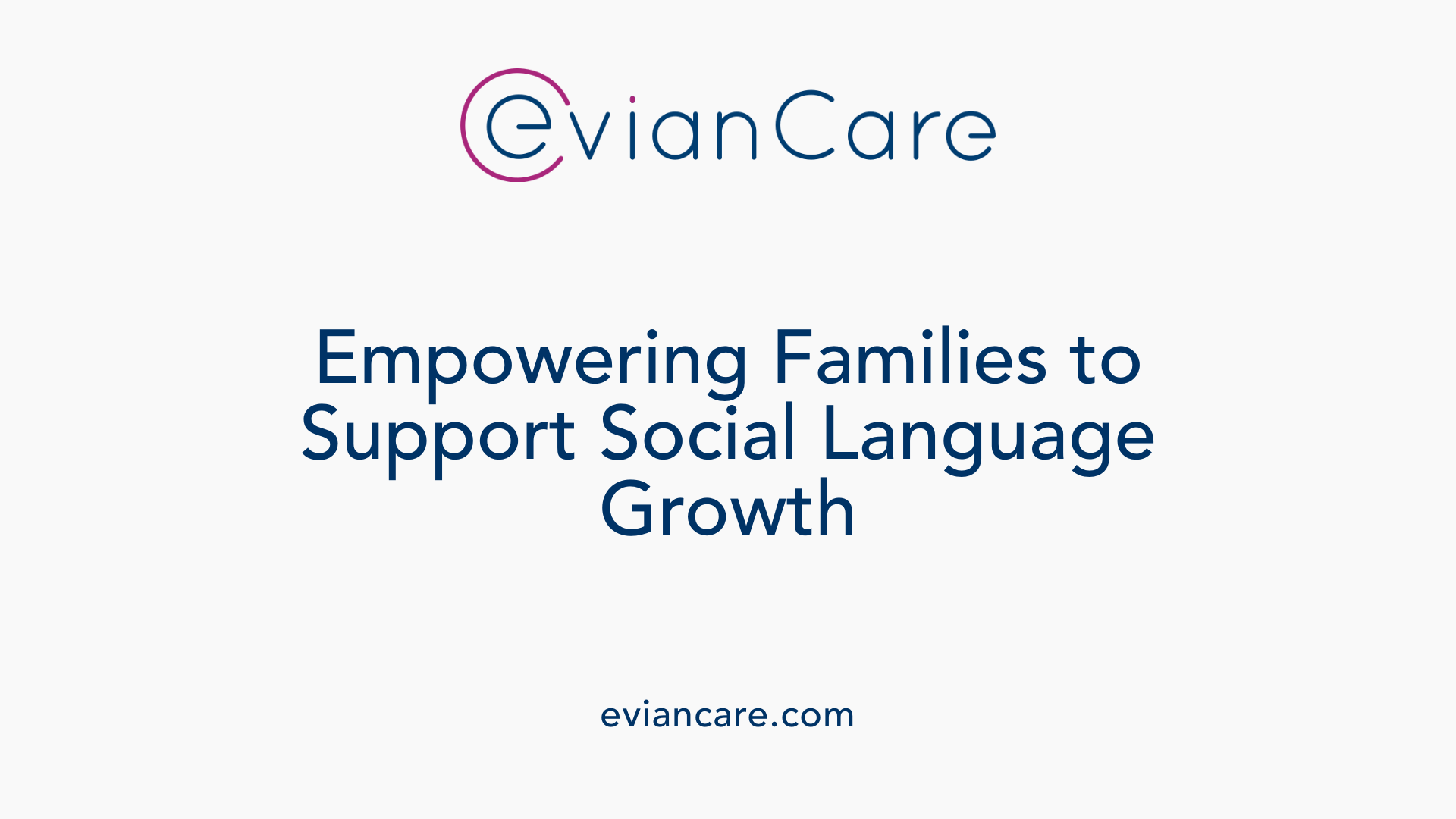
What are the goals and expected outcomes of pragmatic language therapy?
Pragmatic language therapy aims to improve a child's ability to communicate effectively within social contexts. A key goal is to enhance skills such as understanding social cues, like facial expressions and tone of voice, which are essential for interpreting others' emotions and intentions.
Another important focus is on developing conversational skills. This includes initiating and maintaining conversations, understanding turn-taking, and staying on topic. Children learn to regulate their voice volume and respect personal boundaries, facilitating smoother social interactions.
Therapy also targets non-verbal communication, such as eye contact and gestures, which play a vital role in effective social exchanges.
The expected outcomes are increased social competence and confidence around peers and adults. Children should demonstrate improved interaction skills, such as sharing, participating in structured activities, and understanding emotions.
These improvements lead to better peer relationships and social integration, contributing positively to the child's overall social functioning and emotional well-being.
Therapy programs set SMART (Specific, Measurable, Achievable, Relevant, Time-bound) objectives. These help in tracking progress over time with regular assessments, providing feedback to families and practitioners. Such structured monitoring ensures that the therapy remains goal-oriented and responsive to the child's evolving needs.
Ultimately, the therapy fosters skills like empathy and social awareness, empowering children to participate actively and confidently in various social settings, whether at school, home, or community activities.
The Significance of Developmental Milestones in Social Language Skills
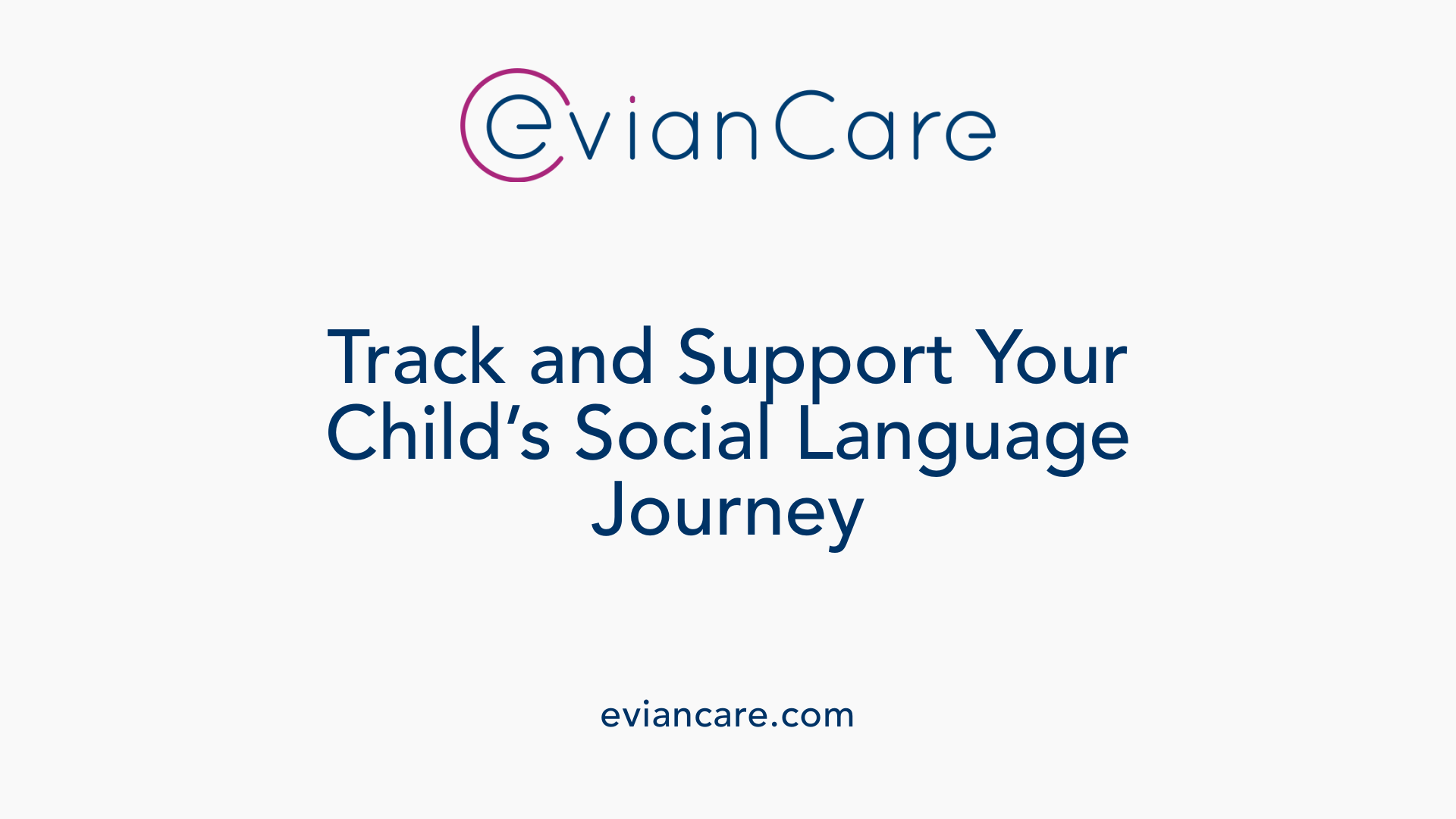
What are typical developmental milestones for pragmatic language skills?
Developmental milestones serve as important markers for children’s progress in social communication and pragmatic language skills. These milestones unfold gradually from infancy through childhood, reflecting the evolving complexity of social interactions.
In infancy, children begin to demonstrate foundational behaviors like making eye contact, using gestures to request objects or share attention, and responding to others' cues. Around 12 months, they start to initiate joint attention and engage in simple exchanges.
By the age of 12 to 18 months, children typically develop a broader repertoire of communicative intentions, including pointing, requesting, and responding with eye contact or gestures. These early skills set the stage for more advanced language use.
Between 18 months and 3 years, kids start to engage in brief dialogues, expressing feelings and making comments. They begin to introduce and switch topics, demonstrating emerging conversational awareness.
From ages 3 to 5, children's pragmatic skills become more sophisticated. They learn to take turns during conversations, narrate simple stories, understand indirect requests, and negotiate socially using language.
Progressing into school years and adolescence, children refine their understanding of non-literal language, like idioms and sarcasm, adjust their speech according to different social contexts, and develop a theory of mind. These advanced skills enable nuanced interactions, empathy, and relationship building.
Supporting children with delayed or atypical development involves targeted interventions such as structured therapy groups, individual therapy, and home activities like pretend play, role-playing, and group participation. These approaches help promote milestone achievement and social competence.
| Age Range | Typical Milestones | Examples of Skills Developed | Support Strategies |
|---|---|---|---|
| 0-12 months | Eye contact, joint attention | Gaze, pointing to share interest, responding to name | Parental modeling, presence in engaging activities |
| 12-36 months | Asking for objects, engaging in short dialogues | Requesting, commenting, using gestures | Play-based activities, social stories |
| 36-60 months | Narrative skills, conversational turn-taking | Storytelling, understanding social rules | Peer group activities, speech-language therapy |
| 5+ years | Understanding humor, indirect requests | Using language contextually, understanding social nuances | School-based interventions, peer-mediated activities |
Understanding these milestones helps caregivers, educators, and clinicians identify typical versus delayed development, allowing for early intervention to support effective communication skills.
Facilitating Peer Interactions and Using Targeted Interventions
What approaches do speech therapists use to facilitate peer interactions and social communication?
Speech therapists employ a diverse range of strategies to support children in developing social and pragmatic language skills. These approaches include social skills training programs, which teach children how to initiate conversations, maintain eye contact, and interpret social cues.
Role-playing activities are commonly used to practice real-life social scenarios, helping children understand and use appropriate responses. Group activities, such as structured play and peer-led games, promote naturalistic social interactions. Peer-mediated interventions—where peers are trained to interact and communicate with children with social communication difficulties—are effective in improving social reciprocity and initiating interactions.
Technology-based methods are also utilized, such as video modeling that demonstrates desired behaviors, social narratives that prepare children for social situations, and speech-generating devices (SGDs) like VOCA or PECS to support verbal and non-verbal communication.
Naturalistic strategies—such as arranging the environment to encourage interaction, responding dynamically to children’s communication attempts, and establishing routines—are vital. For example, Joint Action Routines involve familiar daily activities that scaffold communication, making social exchanges more predictable and engaging.
How do interventions like Pivotal Response Training, Discrete Trial Teaching, and social story techniques promote pragmatic behaviors?
Targeted interventions focus on teaching specific social skills and promoting pragmatic language understanding. Pivotal Response Training (PRT) leverages children’s interests to enhance motivation, focusing on pivotal areas such as responsivity to multiple cues, self-management, and social initiation.
Discrete Trial Teaching (DTT) involves breaking down social behaviors into smaller, manageable components, providing clear instructions, and offering reinforcement for successful responses. This structured approach is particularly useful for teaching turn-taking, requesting, and understanding social rules.
Social stories are personalized narratives that describe social situations, helping children understand expected behaviors and social norms. They are often used to prepare children for new or challenging social environments, fostering appropriate responses and reducing anxiety.
How can naturalistic strategies and targeted interventions support meaningful peer interactions?
Naturalistic strategies create environments where children can naturally practice their social skills during routine activities like play, snack time, or group work. Arranging learning spaces to promote interaction, using responsive partner interactions, and establishing predictable routines foster confidence and social competence.
Targeted interventions complement these environments by explicitly teaching social and pragmatic skills. For example, a speech therapist might combine social stories with peer-mediated activities, giving children real-world practice in understanding social cues and responding appropriately.
These approaches work together to enhance social understanding, improve communication effectiveness, and encourage meaningful peer relationships.
| Strategy Type | Description | How it Supports Development | Example Activities |
|---|---|---|---|
| Naturalistic | Environment arrangements and routines | Promotes spontaneous interaction and communication | Joint Action Routines, responsive play |
| Social Skills Training | Role-playing, group activities | Builds conversational skills and social reciprocity | Peer-led games, cooperative tasks |
| Peer-mediated | Peer training to facilitate interactions | Encourages natural social exchanges and generalization | Peer mentoring, collaborative projects |
| Technology-based | Video modeling, social narratives, SGDs | Reinforces desired behaviors and understanding | Social story videos, PECS communication |
| Targeted Interventions | PRT, DTT, social stories | Teaches specific social skills systematically | Turn-taking drills, social story sharing |
This integrated approach makes social settings more accessible and rewarding for children with social communication challenges, ultimately supporting their social growth and peer relationship quality.
Fostering Social Success Through Combined Strategies
Supporting children’s pragmatic language development requires a comprehensive approach that combines professional speech therapy, structured peer group activities, and active involvement of parents and caregivers. Through targeted interventions, engaging activities, and a focus on developmental milestones, children can acquire the social communication skills necessary for meaningful peer interactions and social success. Early identification of difficulties, along with consistent support, paves the way for improved social competence, increased confidence, and better overall quality of life in social settings.
References
- Pragmatic Language: Building Social Skills for Your Child
- Pragmatic Language Groups
- Pragmatic / Social Language
- Enhancing Pragmatic Language skills for Young children ...
- Setting Pragmatic Language Goals for Speech Therapy
- How To Support Pragmatic Language Development as a ...
- The role of caregiver speech in supporting language ...
- Pragmatic Language - Speech




